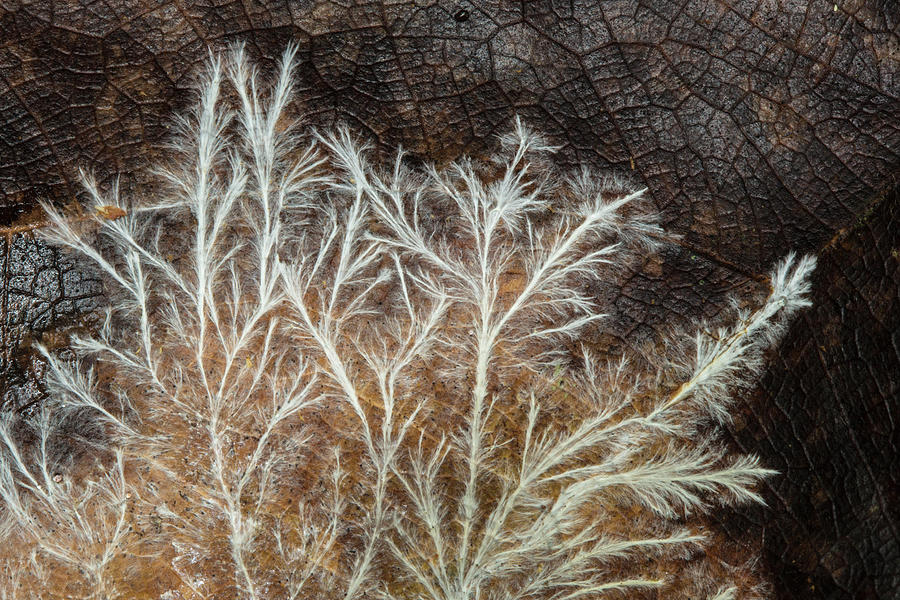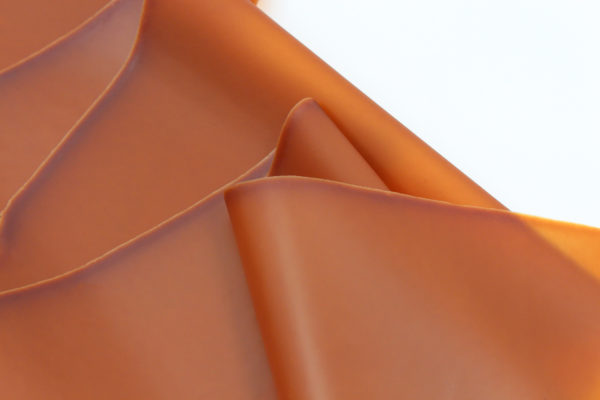
Mycelium is kind of like yeast (both are fungi), but unlike most yeast cells, which grow as a single cell, mycelium is multicellular and can grow into macro-size structures—which we most often recognize as mushrooms. Not only does mycelium produce small molecules, but it gently and with supreme precision assembles them into complex structures so small that they are invisible to the human eye.
Working much like single-celled yeast, mycelium takes in small molecules of food—typically sugar but often from sources such as wood or plant waste—by excreting enzymes that break these materials down into digestible morsels. As the mycelium grows it assembles a dense network of long, microscopic fibers that grow through the substrate like a superhighway system.Once the mycelium has fully built its network, it transitions to its next stage: building a mushroom.This is where humans can intervene. Rather than letting a mushroom pop up out of the substrate, the mycelium can be coaxed to build predictable structures by controlling temperature, CO2, humidity and airflow to influence the growth of tissue.

Mycelium is a bio-based material made of the root system of mushrooms. One of its many uses includes turning it into a leather-like vegan and plastic free material. However, until now, increasing the production volume was challenging because mycelium cultivation takes place in a 2D sheet form of limited size.
The new patent-pending technology is based on growing mycelium in common bioreactors. The liquid fermentation in bioreactors is easily scalable to commercial scales and the technology is already widely used in other fields, like the food and pharma industry.
The production process of fungus-based leather represents circular economy at its best: organic waste can be used as raw material for synthetic leather. Fungal mycelium can produce skinlike material out of, for example, food waste.

Why does this matter?
- 73% of the materials used globally to produce clothing are sent to landfill or burned at the end of their life. Additionally, less than 1% of old clothing goes on to be used to make new clothing.
- Roughly $500B is lost every year from clothing not being worn and not recycled, and if nothing changes, the fashion industry will use up a quarter of the world’s carbon budget. On top of that, washing clothes releases 500K tons of microplastic into the ocean every year.
- 1.2B tons of greenhouse gas emissions are produced annually from textiles production, which is more than those of all international flights and maritime shipping combined.
- A new textiles economy presents an opportunity to deliver substantially better economic, societal, and environmental outcomes.
- Studies show that when plants partner with certain types of fungi, they can store up to 70% more carbon in the soil.
- Durable clothing and accessories can be derived from fungi, which has a lower carbon footprint than traditional animal hides or plastics.





